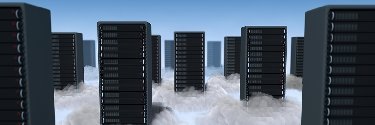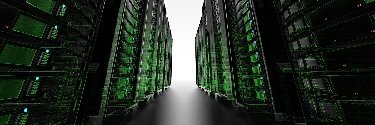Data center ops, monitoring and management
Data center operations are the fundamental workflows that keep a data center operating. Monitoring and management of data center resources comprise the most central data center ops. Learn more about data center software and best practices for monitoring and managing devices and equipment across the data center.
Top Stories
-
Tip
14 Nov 2025

20 systemctl commands for system and service management
Linux administrators are overseeing more systems than ever. Managing system and service settings can be a challenge, but the systemctl command can make those tasks easier. Continue Reading
By- Damon Garn, Cogspinner Coaction
-
Tip
28 Oct 2025

Enhance operations with decentralized data centers
Decentralized data centers enhance scalability, reduce latency and improve data compliance, offering a strategic shift for organizations in modern data management practices. Continue Reading
By- Damon Garn, Cogspinner Coaction
-
Tip
07 Jun 2019

4 essential KPIs for edge computing management
If you want to track edge deployment activity, look at storage, network and processing resources to guide workload configuration and maintenance needs. Continue Reading
By- Stephen J. Bigelow, Senior Technology Editor
-
News
07 Jun 2019

Data center managers avoid cloud migration risks
Many corporate IT users are flocking to the cloud, but a majority surprisingly remain reluctant to migrate their on-premises mission-critical workloads to a public cloud. Continue Reading
By- Ed Scannell, Freelancer
-
Quiz
30 May 2019

Colocation vs. cloud: Quiz yourself on these workload expansion options
Colocation or cloud? Data centers have plenty of expansion options beyond building a new facility. Learn about each option -- and test your knowledge -- with this quiz. Continue Reading
By- Jessica Lulka, Site Editor
-
Tip
28 May 2019

A guide to IaaS provider selection
Adding a cloud infrastructure service requires proper evaluation procedures and research. For a smooth transition, assess VM shapes, developer skill sets, licensing and security. Continue Reading
-
Tip
23 May 2019

How to enhance FTP server security
If you still use FTP servers in your organization, use IP address whitelists, login restrictions and data encryption -- and just a few command prompts -- to keep them secure. Continue Reading
By -
Tip
22 May 2019

3 ways to approach cloud bursting
With different cloud bursting techniques and tools from Amazon, Zerto, VMware and Oracle, admins can bolster cloud connections and efficiently move data in and out of on-prem facilities. Continue Reading
By- Stephen J. Bigelow, Senior Technology Editor
-
News
20 May 2019

Exascale computing, now at $2.8B, described as critical to U.S.
The race to build exascale supercomputers is a project of big governments -- China, Japan, the European Union and the U.S. Initial systems are planned in the 2020 to 2021 time frame. Continue Reading
By- Patrick Thibodeau, Editor at Large
-
News
17 May 2019

HPE-Cray deal brings supercomputers to enterprises for AI
HPE's $1.3 billion deal to acquire supercomputing pioneer Cray Inc. should better position the company in the HPC market among IT shops looking for added muscle to run AI workloads. Continue Reading
By- Ed Scannell, Patrick Thibodeau and Chris Kanaracus
-
Feature
15 May 2019

Red Hat CTO: Scalability, usability key RHEL 8 components
Linux software is expanding its use cases for data center and cloud options. Red Hat CTO Chris Wright details how the company is helping improve IT management and visibility. Continue Reading
By- Jessica Lulka, Site Editor
-
Opinion
15 May 2019

With atoms and lasers, IonQ makes a quantum computing leap
Startup IonQ is taking a decidedly sci-fi approach to quantum computing, using atoms to store information, along with sophisticated lasers to retrieve and process that data. Continue Reading
By- Ed Scannell, Freelancer
-
News
09 May 2019

Solarflare Cloud Onload aims to improve server efficiency
Solarflare Cloud Onload, a new application acceleration platform, was designed to improve data center efficiency and remove waste from today's cloud infrastructure investments. Continue Reading
-
News
07 May 2019

RHEL 8 launches with AI, container and hybrid cloud focus
Red Hat rolled out its long-awaited Red Hat Enterprise Linux 8, designed to work across corporate data centers and multiple clouds and anchor its container and AI strategies. Continue Reading
By- Ed Scannell, Freelancer
-
Tip
06 May 2019

Build up your SDDC security with 3 components
If you want to build a foundation for secure operations in your SDDC, software patches, account privileges and encryption should all be part of your security framework. Continue Reading
By -
Tip
30 Apr 2019

Micro data centers build edge computing opportunities
Organizations can use micro data center deployments to increase on-site data processing. Admins can get their setups right with options from Dell and HPE. Continue Reading
-
Feature
29 Apr 2019

5 quick quantum computing terms to learn
Quantum computers use atomic physics to complete extensive calculations in one minute, but you might not be familiar with some quantum computing terms. This guide offers a primer. Continue Reading
By- Jessica Lulka, Site Editor
-
Tip
16 Apr 2019

Open source virtualization expands VM hardware and OS options
Dive into open source virtualization software with VirtualBox, KVM or QEMU. Each offers customizable VM management capabilities and legacy hardware support. Continue Reading
By -
Tip
08 Apr 2019

4 considerations for choosing a private cloud provider
Key features to look for from a private cloud provider include interoperability, scalability and how familiar admins are with the provider's technology. Continue Reading
By- Julia Borgini, Spacebarpress Media
-
News
04 Apr 2019

Intel Xeon Scalable launch prompts server upgrades
Dell and Super Micro timed server upgrades to this week's launch of next-generation Intel Xeon Scalable processors, based on the Cascade Lake chipset with machine learning software. Continue Reading
By -
News
28 Mar 2019

IBM-Red Hat merger timing, fairness in question
Six months after IBM revealed plans to acquire Red Hat, some IT industry experts have reason to believe approvals will take longer than the companies have suggested. Continue Reading
By- Ed Scannell and Chris Kanaracus
-
Tip
27 Mar 2019

Top 5 Linux performance commands for system administrators
Figuring out Linux host performance issues is time-consuming without the right tools. The top, vmstat, iostat, free and sar commands can help get CPU, device and memory data. Continue Reading
-
Tip
22 Mar 2019

Pick the right colocation site for your organization
Colocation is more than signing a contract and installing hardware. Evaluate redundancy, rack space real estate and distance to ensure a successful colo partnership. Continue Reading
By -
Opinion
13 Mar 2019

IBM quantum computing may arrive sooner than expected
If IBM continues doubling the performance of its quantum computers, as recent benchmarks indicate, it could deliver the first commercial system in the next three to five years. Continue Reading
By- Ed Scannell, Freelancer
-
News
11 Mar 2019

Nvidia acquires Mellanox against growing AI, data competition
Nvidia acquires Mellanox for $6.9 billion, as competition increases for platforms that can handle AI and other data-intensive platforms. Continue Reading
By- Patrick Thibodeau and Dave Raffo
-
News
08 Mar 2019

IBM quantum computer roadmap moves full speed ahead
With IBM releasing its latest benchmark, the company's quantum computer appears to be consistently, if not slowly marching toward commercial reality. Continue Reading
By- Ed Scannell, Freelancer
-
Tip
05 Mar 2019

Get started with PowerShell Core on Linux
PowerShell Core lets you configure and manage Windows, Linux and Mac-based servers in the data center. Learn how to install and navigate the command-line shell in this tip. Continue Reading
-
Quiz
27 Feb 2019

Test your knowledge of cloud computing types
Not all cloud architectures are created equal. Complete this quiz to learn about which cloud models, management tools and features are helpful to data center admins. Continue Reading
By- SearchDataCenter Site Editors
-
News
22 Feb 2019

IBM adds Power to Watson Machine Learning
While they debuted few whiz-bang offerings, IBM did roll out a handful of products that allow users to run AI technologies across more platforms, including Power Systems servers and competitor clouds. Continue Reading
By- Ed Scannell, Freelancer
-
Tip
22 Feb 2019

How to get the most out of your SIEM system
When it comes to threat protection, antivirus software is no longer enough. Data center admins need cloud-based SIEM to ensure their environments are fully protected. Continue Reading
-
Tip
04 Feb 2019

Considerations for a successful DCIM implementation
Selecting the right DCIM software is a complicated process. Make sure you have executive buy-in, vendor support and defined goals to get the best return on investment. Continue Reading
By- Robert McFarlane, Shen Milsom & Wilke LLC
-
News
25 Jan 2019

Broadcom execs: Here's how the CA acquisition works
Broadcom explains why its surprising acquisition of CA Technologies can work, citing complementary portfolios and the long-term viability of mainframe software. Continue Reading
By- Ed Scannell, Freelancer
-
Tip
24 Jan 2019

Tips for selecting a data center testing provider
Finding the right service provider for data center tests can be time-consuming. To pick the right one, be sure to have realistic objectives and a detailed SLA. Continue Reading
By -
Tip
16 Jan 2019

Top five data center trends to watch in 2019
In 2019, data center admins should research how technologies such as AIOps, chatbots and GPUs can help them with their management, help desk and processing needs. Continue Reading
-
News
10 Jan 2019

IBM quantum computing system, apps lab seek commercial users
IBM finally introduced its first integrated quantum computer that is designed for commercial accounts. But the emergence of commercial apps may take some time. Continue Reading
By- Ed Scannell, Freelancer
-
Feature
02 Jan 2019

HCI, acquisitions led 2018 data center news
In 2018, major data center vendors expanded portfolios with acquisitions for HCI and software-defined data center tech -- bolstering admin tool sets for cloud, containers and VMs. Continue Reading
By- Jessica Lulka, Site Editor
-
Podcast
19 Dec 2018

IBM and Microsoft open up to open source in 2018
With IBM's purchase of Linux market leader Red Hat and Microsoft buying GitHub, 2018 could prove to be a watershed year for the open source community. Continue Reading
By- Ed Scannell, Senior Executive Editor
-
Answer
10 Dec 2018

What containerization technology do I need for my data center?
Containers in the data center can help maximize server capacity, but there are a few things to consider before a Docker or Kubernetes implementation. Continue Reading
-
Feature
06 Dec 2018

Security, staffing land atop IT's edge computing challenges
Edge computing is a new way for data center admins to process data closer to the source, but it comes with challenges around security and staffing that organizations must address head-on. Continue Reading
By -
Feature
05 Dec 2018

Edge computing architecture helps IT support augmented reality
Augmented reality benefits greatly from reduced latency, which makes edge computing a perfect partner in the data center. Continue Reading
By -
Tip
05 Dec 2018

How to install ZFS on Linux
ZFS on Linux lets admins error correct in real time and use solid-state disks for data caching. With the command-line interface, they can install it for these benefits. Continue Reading
By -
Answer
03 Dec 2018

What can admins use as a data center GPU?
There is no formal standard to differentiate consumer and data center GPUs. Still, you should evaluate processing speeds and hardware requirements before GPU installation. Continue Reading
By- Stephen J. Bigelow, Senior Technology Editor
-
Tip
28 Nov 2018

Choosing the best OS: Linux server vs. Windows Server
When determining the best server OS for a data center, you have Windows Server and multiple Linux options. For both, you'll want to look at vendor support, cost and functionality. Continue Reading
By -
Feature
27 Nov 2018

Navigate DCIM software selection, security and support
To properly evaluate DCIM software, pinpoint where you can benefit from more operational data and work with vendors. Then, ensure your selection fits your data center needs. Continue Reading
By- Jessica Lulka, Site Editor
-
News
16 Nov 2018

RHEL 8 beta looks to speed development of cloud-based apps
Red Hat Enterprise Linux 8.0 updates the software's DevOps capabilities with Application Streams, and boosts its appeal to both developers and line-of-business managers. Continue Reading
By- Ed Scannell, Freelancer
-
Answer
13 Nov 2018

What does GPU hardware do in the data center?
Once part of the gaming industry, GPUs are gaining traction in data center infrastructures. Learn why the power of GPUs makes them fit virtualization and data-heavy applications. Continue Reading
By- Stephen J. Bigelow, Senior Technology Editor
-
Tip
09 Nov 2018

Evaluate Linux server distros for your data center
Linux is known for its reliability and flexibility in the data center. To select the proper distribution for your servers, you'll need to evaluate your application and support needs Continue Reading
By -
News
02 Nov 2018

In IBM deal's wake, Red Hat RHEL 7.6 targets hybrid cloud
After its acquisition by IBM, Red Hat wasted little time unveiling the next version of its flagship product, RHEL 7.6, which supports hybrid clouds and updated security. Continue Reading
By- Ed Scannell, Freelancer
-
Tip
25 Oct 2018

Research advances data center liquid cooling tech
You might want to investigate alternatives to water and fans to keep your data center cool. Still, there are costs and environmental concerns facing researchers and IT administrators. Continue Reading
-
Tip
16 Oct 2018

A look at fundamental Linux sed commands
The Linux stream editor is a useful way to run scripts in the data center. With these command examples, you can start to build your familiarity with sed. Continue Reading
By -
Answer
12 Oct 2018

What are some useful remote server management tools?
Choosing software for remote server monitoring and maintenance depends on organizational and administrative needs. Here are a few programs to include in your search. Continue Reading
By- Stephen J. Bigelow, Senior Technology Editor
-
Tip
11 Oct 2018

Minimize downtime during a data center upgrade
End users don't want their productivity interrupted by IT maintenance. With the right technology, testing and planning, you can reduce or eliminate downtime in the data center. Continue Reading
By -
Tip
08 Oct 2018

Navigate data center management software selection
Software evaluation can be a lengthy process, especially with both open source and commercial options. Functionality and support can help you form a short list of possibilities. Continue Reading
-
Opinion
20 Sep 2018

Nvidia partnership bolsters VMware live migration capabilities
As part of vSphere 6.7.1, admins can now live migrate virtualized workloads supported by vGPUs. The Nvidia and VMware partnership improves high-capacity management capabilities. Continue Reading
By- Zeus Kerravala, ZK Research
-
Answer
18 Sep 2018

Can I use server automation for remote management?
Depending on your server management workflow, you might want to consider automation and orchestration. Before going forward, you should figure out what scripts are necessary. Continue Reading
By- Stephen J. Bigelow, Senior Technology Editor
-
News
14 Sep 2018

GPU-buffed servers advance Cisco's AI agenda
Cisco's latest UCS servers with Nvidia's GPUs aim to help larger IT shops more quickly run AI and machine learning workloads -- and help Cisco keep pace with Dell and HPE. Continue Reading
By- Ed Scannell, Freelancer
-
Tip
14 Sep 2018

Discovery functions, FIPS compliance increase DCIM security
Data center infrastructure management is one way to track security patches and unauthorized hardware access. There are a few features you can use to increase security. Continue Reading
By- Robert McFarlane, Shen Milsom & Wilke LLC
-
Feature
13 Sep 2018

Data center admins gain the benefits of microservices
Microservices bring perks to data center infrastructures, especially when it comes to long-term maintenance. But admins need to properly evaluate it before implementation. Continue Reading
By- Jessica Lulka, Site Editor
-
Answer
29 Aug 2018

Which basic Linux file management commands should I know?
File management is an essential part of working within Linux. Knowing a few basic commands makes it easier to move content and avoid file misplacement. Continue Reading
-
News
27 Aug 2018

Dell EMC HCI gear pushes multi-cloud strategy
Dell EMC will use its HCI systems when it bundles software to encourage multi-cloud environments and push adoption of the company's own multi-cloud strategy. Continue Reading
By- Ed Scannell, Freelancer
-
Tip
23 Aug 2018

Getting started with Linux containers
Linux-based containers allow you to run applications in the data center without modifying OSes. If you're not sure how to get started, options such as Docker and CoreOS can help. Continue Reading
-
Feature
13 Aug 2018

14 SIEM reports and alerts to boost security
Setting up an SIEM reporting infrastructure requires an overall knowledge of what data capture is available. With standard reports and event categories, you can ease implementation. Continue Reading
By- Jessica Lulka, Site Editor
-
News
10 Aug 2018

IBM Power9 servers add reliability, reduce maintenance costs
IBM looks to grab high-end hardware market share from archrival Intel with the introduction of two Power9 servers that offer greater uptime and reduced maintenance costs. Continue Reading
By- Ed Scannell, Freelancer
-
Feature
08 Aug 2018

Accelerated processing units advance data center performance
As you come across more complex data center workflows, you can begin exploring options for accelerated processing, such as GPUs or TPUs. Continue Reading
-
Answer
06 Aug 2018

How do I protect my OS with Linux security features?
Linux has a security framework with multiple layers, which makes it hard to maintain permissions and privileges. User-based profiles and whitelisting can help you oversee OS access and give you peace of mind. Continue Reading
-
Feature
25 Jul 2018

Choose the cloud computing deployment model that fits your data center needs
Organizations looking to the cloud to update their data center should consider the future development of systems management providers when selecting a cloud computing deployment model. Continue Reading
-
Tip
24 Jul 2018

SDDC architecture basics and deployment considerations
Software-defined data centers accelerate hardware provisioning and maintenance. These benefits are reason enough for admins to familiarize themselves with SDDC components. Continue Reading
-
Tip
24 Jul 2018

GPUs, FPGAs increase software-defined data center performance
Some applications in your SDDC might need special hardware so they can function at their best. GPUs and FPGAs are an effective way to increase performance. Continue Reading
-
Tip
18 Jul 2018

Four top open source SIEM tools you should know
Open source SIEM software offers organizations a way to test capabilities and augment existing functionalities for analytics and log management. Get started with these options. Continue Reading
By -
News
16 Jul 2018

Rackspace colocation program hosts users' legacy servers
Rackspace now has a managed colocation program that it hopes to upsell its customers with additional services, once their servers are in-house. Continue Reading
By- Ed Scannell, Freelancer
-
News
12 Jul 2018

Broadcom acquisition of CA seeks broader portfolio
Broadcom has acquired CA Technologies in a move some believe is largely financially motivated, while others see an opportunity for the companies to integrate core offerings. Continue Reading
By- Ed Scannell, Freelancer
-
Tip
12 Jul 2018

Ten Linux process management commands that simplify admin workflows
If you work in Linux, chances are you have to do some process management. Here are some commands to simplify that workflow. Continue Reading
-
News
09 Jul 2018

Managed private cloud gives IT a cost-effective option
Cloud evaluation requires planning and cost analysis. With available technology and managed service providers, IT can reduce long-term expenditures and management headaches. Continue Reading
By- Jessica Lulka, Site Editor
-
Tip
05 Jul 2018

Agile workflows shift admins' IT procurement strategy
Changing business needs and the move toward Agile workflows affect how data center managers make decisions about daily operations and IT purchasing. Continue Reading
-
News
03 Jul 2018

Dell's return to public markets sidesteps VMware query
In a complex stock deal Dell once again becomes a public company to flex its muscles against major legacy IT rivals, but sidesteps questions about VMware's autonomy. Continue Reading
By- Ed Scannell, Freelancer
-
Feature
25 Jun 2018

SIEM software basics and use cases for IT administrators
Security information and event management products use algorithms to stop cyberattacks in their tracks, but they also offer other workflow benefits for admins. Continue Reading
-
Feature
22 Jun 2018

Why data centers need log management tools
Log files contain rich and useful management data. With the right software tools and a few navigation tips, you can maximize and implement the information that logs provide. Continue Reading
By- Jessica Lulka, Site Editor
-
Feature
20 Jun 2018

Build your PowerShell command cheat sheet with these basics
Even if you've previously used PowerShell, it's beneficial to add new commands to your reference sheet and keep your overall knowledge as current as possible. Continue Reading
By -
Tip
19 Jun 2018

Open source log management options for Linux distributions
Open source log management tools provide a variety of options and capabilities for admins who want customizable Linux log management functions in a server or cloud environment. Continue Reading
-
Feature
15 Jun 2018

Data center monitoring best practices simplify software choice
Metrics are essential to keep any data center operating smoothly. With monitoring software and best practices, admins can simplify their workflows and get usable data. Continue Reading
By- Jessica Lulka, Site Editor
-
Feature
14 Jun 2018

What to know before selecting DCIM software
Your DCIM needs will dictate what type of software is best for your workflow. Be sure to evaluate usability, expandability and which areas need monitoring. Continue Reading
By- Robert McFarlane, Shen Milsom & Wilke LLC
-
Tip
12 Jun 2018

Work a command-line interface in Linux with these permissions and prompts
The command-line interface is an integral part of the Linux management environment. With sudo permissions and remote connectivity, working with a command line is easy. Continue Reading
-
News
01 Jun 2018

IBM's Cloud Private for Data brings on-prem data closer to the cloud
IBM rolled out its Cloud Private for Data platform designed to make it easier for users' on-premises data to interact with not just IBM's public cloud, but those of AWS and Google. Continue Reading
By- Ed Scannell, Freelancer
-
Tip
01 Jun 2018

Easily read a log file in Linux with command-line tools
Depending on the specific Linux distribution you use, there is a variety of commands to help you locate, read and search log files within related program components. Continue Reading
-
Tip
31 May 2018

Web server management best practices and essential features
There are a lot of tools on the market for web-based server management. To find the best product, look for functions that automate workflows and add security. Continue Reading
-
Tip
29 May 2018

Top 4 advantages of a command-line interface
With the simple look of the command-line interface, organizations don't always realize the advantages it brings to systems through pointed, accurate commands. Continue Reading
By- Stephen J. Bigelow, Senior Technology Editor
-
Tip
23 May 2018

Get to know SIEM software basics and benefits
Security information and event management tools give organizations enhanced network management functionality, such as automatic reporting, data stream analysis and anomaly detection. Continue Reading
-
Tip
22 May 2018

Hadoop cluster configuration best practices streamline workflows
Organizations that deal with a variety of Hadoop configurations can streamline workflows through baseline configuration, tests and site-specific configuration files. Continue Reading
By -
Answer
16 May 2018

How is RHEL in the cloud different than in the data center?
Implementing RHEL in the cloud isn't exactly the same as using cloud technology in the data center, especially when addressing swap and support concerns. Continue Reading
-
Answer
15 May 2018

SIEM benefits include automated monitoring, malware mitigation
SIEM tools deliver automated alert actions, normalize log data and provide intelligent filtering, all of which can help IT administrators lighten their workloads. Continue Reading
-
Tip
14 May 2018

Hadoop cluster capacity planning best practices
Trying to calculate Hadoop cluster capacities isn't always straightforward. It's important for organizations to include IOPS and compression rates in their predictions. Continue Reading
By -
Feature
10 May 2018

Decide which application monitor software is right for you
Organizations that want to implement application monitoring tools should consider how the tool gathers and reports information, as well as the purchase and licensing costs Continue Reading
By- Stephen J. Bigelow, Senior Technology Editor
-
Feature
01 May 2018

Systems management software heads for the cloud
Systems management providers are pushing their on-premises offerings to the cloud, as well as developing or acquiring pure cloud-based software in hopes of staying relevant. Continue Reading
By- Ed Scannell, Freelancer
-
Answer
27 Apr 2018

What are the top SIEM use cases?
SIEM tools help organizations detect and mitigate malware and viruses, but they also allow administrators to offload traffic when an attack hampers performance. Continue Reading
-
Answer
24 Apr 2018

What are the options for log management in Linux?
Linux administrators should use syslog and systemd-journald together for smart log analysis. But there are also open source log management tools to consider. Continue Reading
-
Tip
19 Apr 2018

Guide to buying server performance monitor software
Integration, storage and vendor support all affect whether a performance monitoring tool is right for an organization. Mull over these ten factors to choose the right one. Continue Reading
By- Stephen J. Bigelow, Senior Technology Editor
-
News
16 Apr 2018

How IBM's data science team quickens users' AI projects
In this Q&A, IBM's Seth Dobrin discusses the rising user interest in machine learning and AI projects and the help inexperienced users need to launch those projects. Continue Reading
By- Ed Scannell, Freelancer
-
News
30 Mar 2018

Ireland's data centers are strategic connection hubs for Interxion
Interxion's Dublin-based data center business continues to grow as an increasing number of American and European companies see Ireland as a strategic connection hub. Continue Reading
By- Ed Scannell, Freelancer
-
Opinion
29 Mar 2018

Organizations don't have to pick private or public cloud
Organizations don't necessarily have to decide between using a public or private cloud. For some companies, the answer is both. For others, it's neither. Continue Reading
-
News
20 Feb 2018

IBM Power9 servers seek market inroads to AI, cloud
IBM follows up its first Power9 server with a raft of systems designed to appeal to a wider array of markets -- most notably, AI and cloud deployments. Continue Reading
By- Ed Scannell, Freelancer
-
Tip
09 Jan 2018

Three requirements for a hybrid cloud computing deployment
As the hybrid cloud computing approach gains steam, organizations will need to pay close attention to cross-cloud connectivity and management, plus microservices. Continue Reading
-
Tip
11 Oct 2017

With Btrfs file system gone in RHEL 8, look at alternatives
In the XFS, Ext4, Btrfs and ZFS comparison, Linux users will say goodbye to Btrfs in RHEL 8. Learn more about your options and what can fill the gaps once development halts. Continue Reading